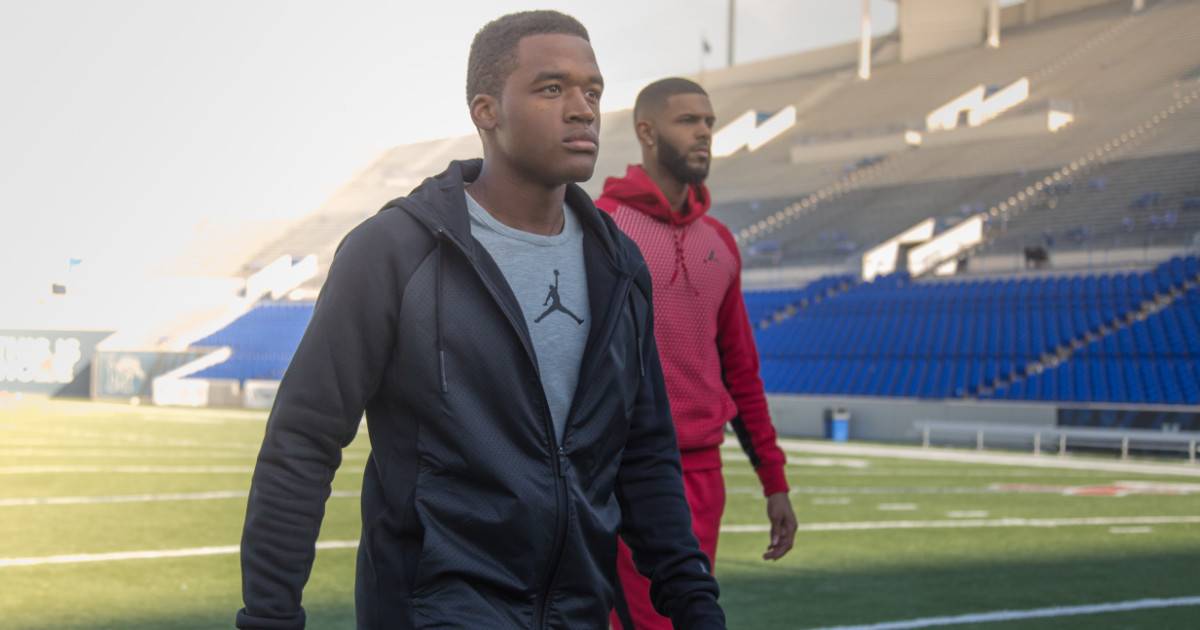Milwaukee Bucks forward Giannis Antetokounmpo understands the power of social media for athlete branding.
Last month, the superstar pro athlete used Instagram Live to capture his drive-thru trip to a local Chick-fil-A after the team’s historic NBA Finals win. He recorded his order of (exactly) 50 Chick-fil-A minis (chicken nugget sandwiches) in celebration of the 50 points he scored in the climactic, series-winning game. The video hit all the feels for Bucks fans on-site and everywhere else. And his subsequent Twitter exchange with the brand requesting “free nuggets for life” kept the social conversation going long after he left the restaurant with his championship series trophies along for the ride. Antetokounmpo recognized he had a special opportunity and platform to further grow his personal brand by engaging fans live in the moment — and by simply being himself. Fans have come to love this relatable star athlete.
This popular NBA player doesn’t even have an endorsement deal with Chick-fil-A — he just loves their food. It paid off for the restaurant chain in brand value lift earned from that single experience as it took off across social media. Imagine the value his electric personal brand and social media presence can have for companies he’s officially endorsing.
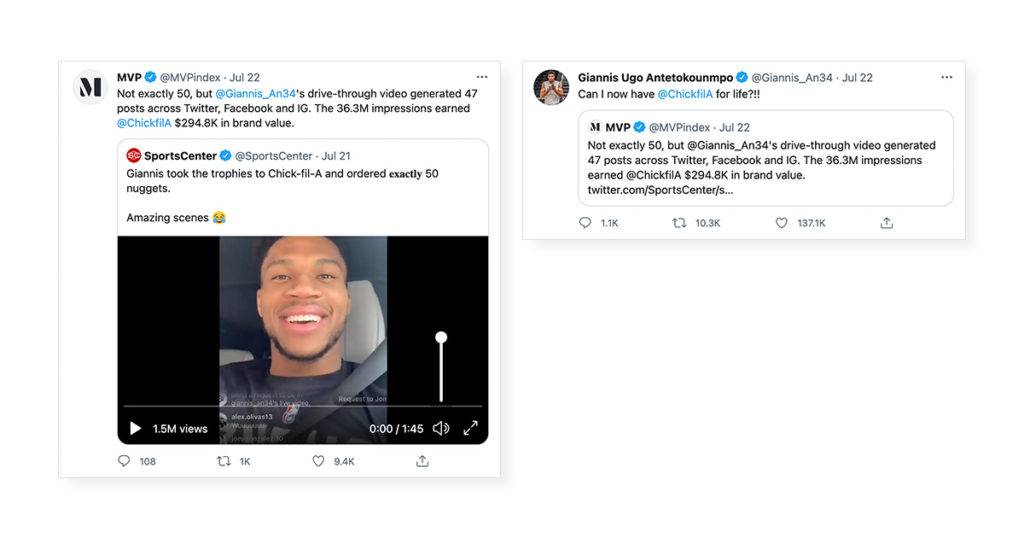
NIL Has Leveled the Athlete Branding Playing Field
With the NCAA’s recent authorization of name, image, likeness (NIL) rights, college athletes are starting to think like the pros in building their personal brands as they chase sponsor deals. They can earn substantial amounts of money from endorsements now, too, so the difference between college and pro athletes in this area has disappeared almost overnight.
While outstanding athleticism is obviously still critical, a great attitude, clean background, and a large and engaged social media following are also now important factors for sponsors when selecting athletes to endorse. They’re looking for influential faces that can best represent and endorse their companies, as these sports professionals grow their careers. Professional athletes have benefited from this connection between a strong media presence and endorsement deals for years. Now, a prominent social media profile is even more important, especially for smaller brands. Student-athletes can take a page from the pro athlete playbook to develop their own outstanding personal brands on digital channels.
As demonstrated by the pros, athletes playing any sport are now social media influencers and if they position themselves correctly, they are coveted by sponsors. But younger players need to start now to raise their profiles to get the most lucrative money-making opportunities. Just like it takes time and dedication to master a sport, building an athlete’s fan base requires patience, dedication and knowledge. But, this boost will help springboard them to further possibilities if they continue on to a pro career, and even (especially) if they don’t. The good news is that college athletes are digital natives who are already creating and sharing content. They just need to filter that activity through the lens of strategic, long-term thinking about personal brand building and what type of persona will best support their future career.
“As a pro athlete, I realize the importance that my social media presence…from sponsorship opportunities to engaging with fans.”
Brad Smith, Premier Lacrosse League player, former All-American, Duke University
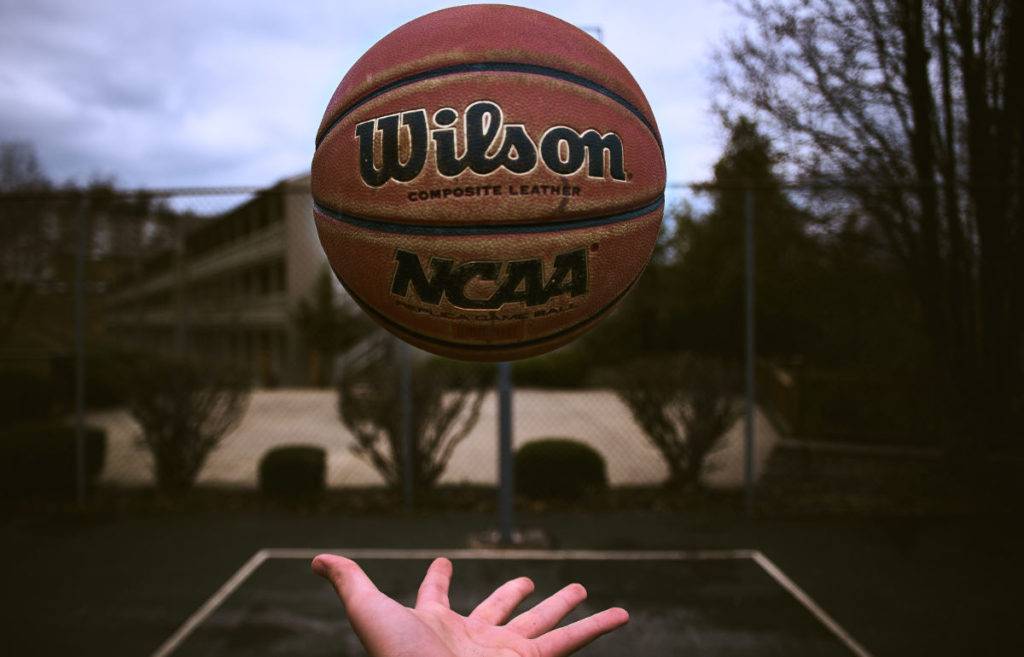
Athletes Need Support From Their Teams
College athletic departments should also be very keen to help players shape their brands, in addition to providing a great athletic and academic experience. When not endorsing a product, athletes are representing their school, and that means they’re helping expand the schools’ profile. This activity is critical for recruiting next year’s athletes and student body, securing future funding, and cementing bragging rights for alumni.
“As a pro athlete, I’ve realized the importance of and the opportunity that my social media presence presents me, from sponsorship opportunities to engaging with fans. The tools I have to build my brand today would’ve been huge for getting an earlier jump on this when I was playing in college.” said Brad Smith, a Premier Lacrosse League Whipsnakes player and former USILA All-American at Duke University.
Pro teams and leagues know the value of athletes engaging directly with fans, and many, like the NBA and MLB, have created programs to help and support players in shaping their online profiles. They’ve assigned dedicated staff and use software like Greenfly to gather and distribute photos and videos to each athlete so they can share them on social media. With the rise of NIL, college athletic departments are understanding how they can support their student-athletes in this area as well.
Let’s take a look at five athlete branding lessons for schools and their student-athletes from the pros who’ve successfully built and maintained strong personal brands and social media fan connections.
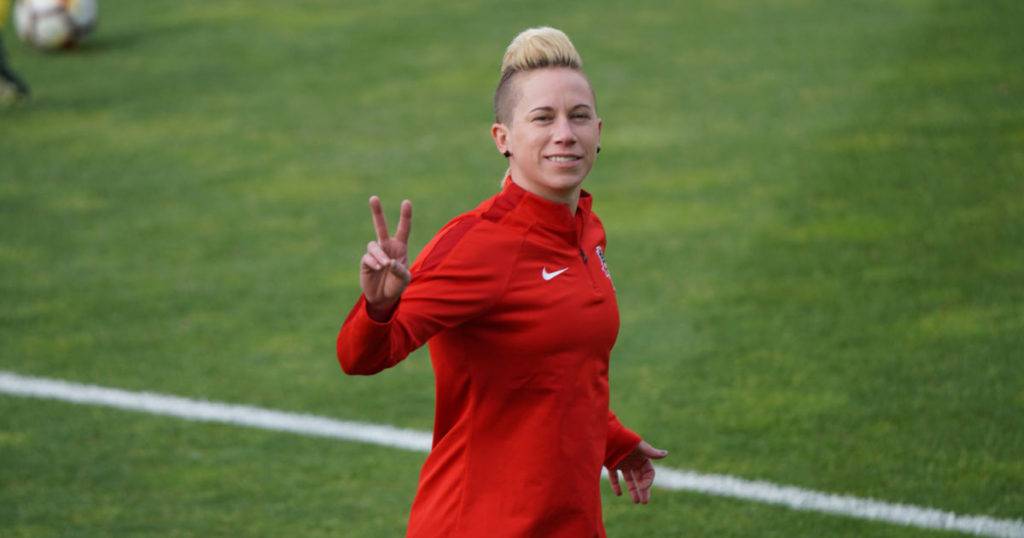
Five Keys To Building a Strong Personal Brand for Athletes
Social Media Opens More Endorsement Opportunities (and more income)
More and more, fans want to connect with athletes, not teams or leagues, on social media. Pro athletes have come to understand this and their own global clout and influence. They’ve thought strategically about how to build and maintain a long-term personal brand plan that can support their careers and last long after they’ve hung up their jerseys. Like any brand, they’ve learned that without a distinct vision and proper nurturing over time, an athlete’s brand can quickly get lost in a sea of more potent and compelling voices.
College players can construct successful, long-lasting brands and open up endorsement opportunities like the pros by developing their social media profiles and partnerships with intention and alignment. Intention focuses on presenting a consistent, authentic voice and personality and choosing the subject matter to match. Alignment involves selecting the sponsors and platforms that are in tune with the intention they’ve set and the public perception and values they want to maintain.
School athletic staff can help their athletes in this area as they get to know them during their college careers. They can offer tips and examples on selecting the social platforms and visual mediums that best match their individual personalities and interests on and off the field. They can also provide personalized content and posting suggestions that set them apart from other athletes and represent their schools with professionalism and pride. In this way, they can support their current students and expand excitement and awareness among future recruits.
With Athlete Branding, Authenticity Is Invaluable
High-quality, authentic content coming directly from athletes reaches and connects with fans on social media in ways sports brands can never replicate for their athletes on owned channels.
Would you rather have a major league team tell you about a game-winning play involving one of their players or hear about it first-hand from the athlete, with all their personal emotion and insight? And volume matters: the social reach of a team of pro players generally outpaces a brand’s by a wide margin.
College athletes can mirror this authentic, first-person approach to social media. Schools can give their student-athletes the tools to create their own original content or share team-captured images or videos, augmented with their personal commentary. That media could be tons of curated matchday photos or behind-the-scenes moments training and hanging out with teammates. Their individual spin enables the players to publish media that supports their profile and lets their personalities shine. And once they get started creating and sharing content, they won’t want to stop.
Many pro teams working with Greenfly see the vast majority of their athletes using the platform actively and consistently. And those players never worry about having their photos and videos to show their families and friends — or sponsor partners. They have them on their mobile phones by the time they hit the bench.
Consistent and Frequent Social Sharing Matters
An athlete’s brand doesn’t come and go with the season. Nor do their endorsement deals and fan connections — those are all year-round commitments. So their social media accounts must be as well. Posting once a week or once a month doesn’t work either. Engaging followers takes time every day; athletes need to post stories at least once per day, if not more, and think about setting aside even 15 minutes to create personal comments to enhance their posts.
The pros know activity surrounding game day is certainly paramount for driving athlete branding and social media engagement. Still, pre-season, non-game day and off-season content is the glue that keeps fans connected daily and throughout their careers. These in-demand athletes often don’t have time to focus on publishing social content on game day or at other points in their busy schedules. Many of these, including global superstars, have trusted people in their inner circles to capture content or post on their behalf. And they plan their posts out so they can always get their fans and sponsors the media they want.
Similarly, student-athletes may be challenged with keeping a steady stream of content to their social accounts. They can also delegate content capture and posting from their profiles to family, friends, agents and more. Schools can support this content capture by enlisting the help of live content correspondents like the major pro leagues. They can then create curated media galleries for their athletes whenever they and their teams are looking for fresh content to post.
Spending a little bit of time every day supports solid brand building for the future.
Social Posts Should Capture Highs — and Lows
The pros are always aware of the combined power of their image, content and social platforms where they excel. The more personal, intimate and authentic their social media posts are, the more engagement they have, and the faster their followings grow. This honesty and peek into the ups and downs of their ‘human-ness’ means a lot to fans.
Larger and more engaged audiences mean more monetization opportunities. Sponsors are looking for stand-out endorsers to put a human face on their company, and that humanity is key. Athletes who aren’t afraid to show vulnerability attract sponsorships that become a bigger piece of their compensation pie during and beyond their playing years.
College athletes can incorporate this lesson by creating hype for themselves instead of only for their school or team. They can find ways to showcase their individuality within content produced for them and also original media they make. It could be a story around personal career statistics or content that shows their lives outside of the game to humanize their brands further — it doesn’t always need to be about the school logo or match experience.
Schools can help by designing personalized graphics and capturing candid player moments to support those activities and content themes. And, they don’t need to be around games. Some of the most popular social content pro athletes share are pregame or practice arrival shots to showcase their repped brands and distinct styles.
Lead With a Focus on the Right Goals and Metrics
In the pros, athlete content goals focus on creating a desirable personal brand and digital presence first, backed by social metrics such as followers or likes. These players appreciate the value of data to improve gameplay performance and content performance — including what will help boost their profiles and potential for endorsements the most. What does matter is their follower-to-engagement ratio — engaged followers matter much more than the total number of followers. How many followers like their posts? Share or re-share? Comment? The more players are driving that type of activity, the more influence they have.
As today’s college athletes started using social media, they were likely chasing those same vanity metrics but living post-to-post and constructing a brand largely without any intention and alignment. In the NIL era, only those athletes leading with their personal brands will come out on top. To help student-athletes think more like the pros, their schools can step in. They can provide granular data points to inform their social media activities. This intelligence can guide athletes to their best content, media formats, social platforms, posting schedules, and more that can personally serve them the most as they expand their digital profiles.
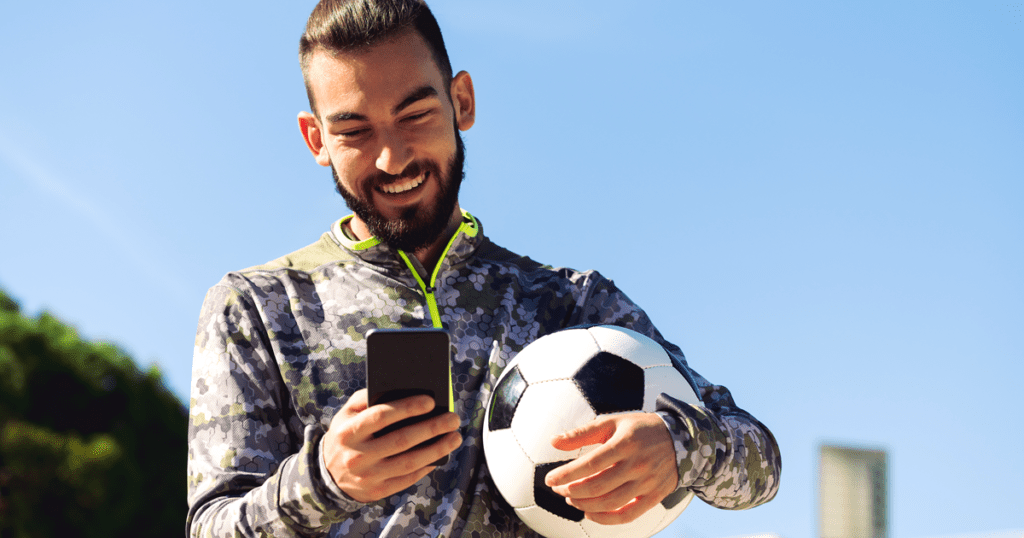
Athlete Branding Takes Time, So Start Early
College athletic directors are quickly becoming aware of the need to support athlete branding for the good of their student-athletes and schools. They can implement these five lessons by starting to supply players with their own media today so they can begin posting high-quality content regularly and all year round. That ongoing focus and attention, with intention and alignment, is what shapes successful, long-term athlete brands.
Athletic departments are turning to advanced, automated technology to accomplish all this. With it, they can collect, manage and distribute digital media directly to athletes, and help them analyze their social performance.
Greenfly’s digital media management platform makes it easy for athletic departments to harness the power of digital media to support their players. With Greenfly software, athletic departments can automate and manage digital media content aggregation and remotely direct video and photo capture to get it to athletes fast. We’ve helped schools of all sizes collect and distribute digital media and activate athletes around the stories that matter to them, their followers and sponsors.
If you’re exploring ways to give your athletes media this season to support their personal branding goals, get in touch with our team of experts.
Editor’s note: Brad Smith is a Greenfly employee.

